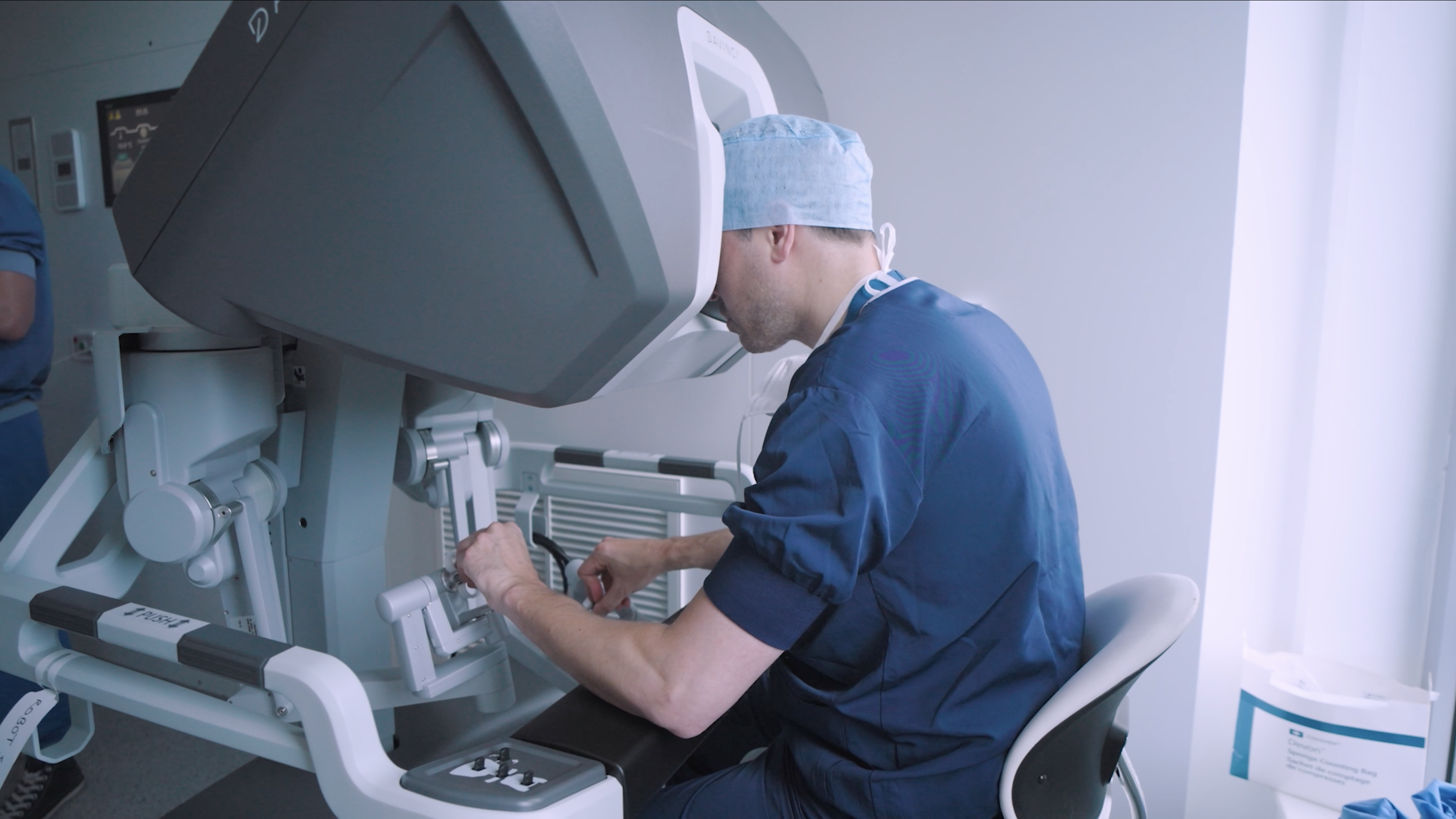World First at Maria Middelares Hospital in Belgium thanks to da Vinci SP’s innovative technology
As part of the new Health Value Space Ghent, Maria Middelares Hospital continues to lead the way as a “smart” hospital, poised to deliver healthcare of the future to its patients. The new da Vinci SP (single port) surgical system has now been in use since May 21, making complex surgery even less invasive, via a single incision. It was on May 27 that a world first took place at the hospital: a kidney autotransplantation assisted by the da Vinci SP surgical system.
The arrival of Intuitive’s new da Vinci SP system aligns perfectly with Maria Middelares' vision of developing a patient-oriented robotics platform. The SP enables more complex procedures to be performed through a single incision or natural orifice. Over 400 peer-reviewed publications demonstrate the safety, efficacy, and excellent results of this cutting-edge technology. The da Vinci SP offers incredible value on a daily basis for Maria Middelares and its patients.
A World First
A World FirstOn May 27, urologist Prof. Decaestecker achieved a world first. Using the da Vinci SP, he performed an intracorporeal kidney autotransplantation on an 18-year-old woman suffering from a complex ureteral lesion, with severe damage to the ureter between the kidney and the bladder. The best solution for the patient was to bridge the major defect in the ureter by moving the kidney closer to the bladder. This technique is called autotransplantation.
The transplantation was achieved intracorporeally, meaning entirely inside the body. Prof. Decaestecker has perfected this technique, having performed such operations since 2017 (a European first at the time) using the Da Vinci Multiport system, equipped with four robotic arms. The advantage of an in-body operation is that no large incisions are required to move the kidney in and out of the body; only a few small incisions (with the Multiport) of around 1 cm were needed to introduce the robotic instruments.
“What’s new now is the combination of in-body grafting with a single incision thanks to the SP robotic system, which has just one articulated arm. This is less intrusive for the patient’s body and should also facilitate smoother post-op recovery. Other advantages are that we can perform the procedure entirely outside the abdomen, allowing the patient to lie flat on their back in a natural position. This is important as the patient can now be operated on in a more comfortable position, therefore with fewer intestinal complications.”
“What’s new now is the combination of in-body grafting with a single incision thanks to the SP robotic system, which has just one articulated arm. This is less intrusive for the patient’s body and should also facilitate smoother post-op recovery. Other advantages are that we can perform the procedure entirely outside the abdomen, allowing the patient to lie flat on their back in a natural position. This is important as the patient can now be operated on in a more comfortable position, therefore with fewer intestinal complications.”
Prof. Dr. Karel Decaestecker

What does the future hold?
What does the future hold?With the development of a robotics platform, Maria Middelares aims to optimize the use of robotic systems within the operating bloc as much as possible. The goal is to optimize operating room efficiency and improve patient outcomes. These innovative surgical systems allow for further personalization of surgery based on patient needs.
Dr. Ameye, Director of Innovation, adds: “In our organization, we strive to seek out the best technology combined with in-depth monitoring. We map the quality of care using big data analysis based on a multitude of uniform data. This enables us to identify areas for improvement and continuously optimize our care. Providing value-based healthcare is our main motivation.”
Something wrong or unclear on this page? Report it.



